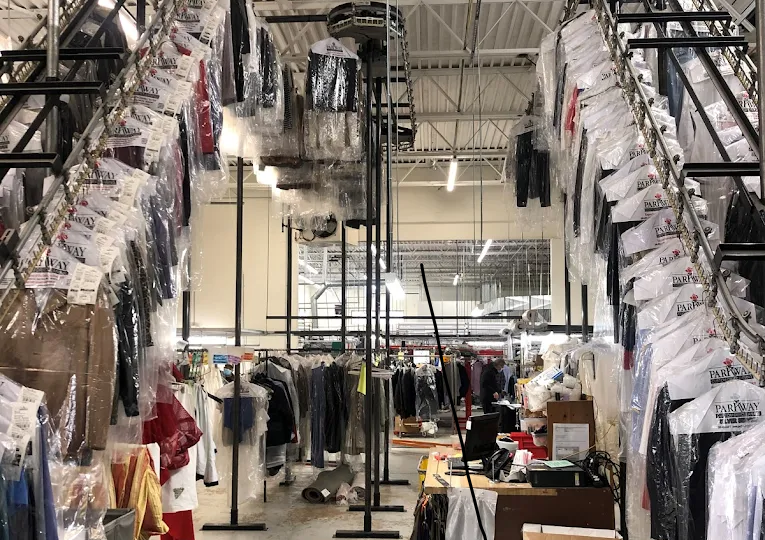Parkway Custom Drycleaning Announces Expert Guidance on Recognizing and Restoring Worn Leather Jackets
A Heritage Brand Shares How to Spot Early Signs of Damage and Restore Leather Garments Before It’s Too Late
Washington, D.C. — Parkway Custom Drycleaning, a leader in specialty garment care since 1926, has released expert advice to help consumers recognize the most common signs of leather jacket wear and understand how to restore and preserve their garments. With nearly a century of experience in leather and suede restoration, Parkway emphasizes the importance of addressing issues early before they result in permanent damage.
A quality leather jacket is more than just an article of clothing; it is a statement piece that evolves over time, developing a unique patina. However, not every change is a mark of character. Cracks, fading, stiffness, or unpleasant odors may signal the beginning stages of deterioration. Parkway’s team of experts explains what these changes mean and how proper care can restore and extend the life of leather garments.
Leather Jacket Feels Stiff or Crunchy? Here’s Why
Industry experts at Parkway note that when a jacket begins to feel brittle, crunchy, or uncomfortable, it is typically due to dryness caused by a lack of conditioning. Over time, natural oils within the leather deplete, particularly when garments are exposed to heat or stored in overly dry conditions.
Recommended Solutions
Use leather-specific conditioners designed for garments, not furniture.
Avoid home remedies such as olive oil or body lotion, which can stain or degrade leather.
For significant stiffness, professional treatment is strongly advised.
Parkway Custom Drycleaning specializes in rehydrating leather with advanced treatments that safely restore flexibility and softness.
Faded or Discolored Leather? UV Damage May Be the Cause
Uneven fading or patchy coloration is often the result of UV exposure, which breaks down dyes and diminishes the vibrancy of leather garments.
Parkway’s Expert Tips
Store leather away from direct sunlight and heating vents.
Apply conditioners with built-in UV protection.
For severe fading, Parkway provides professional color restoration services to revive the jacket’s original tone.
Musty, Mildew-Like Odor? Signs of Mold Growth
A musty smell may indicate mold or bacterial growth caused by improper storage in humid spaces or inside non-breathable plastic garment bags.
Odor Removal Guidance
Avoid masking odors with sprays or perfumes, which can further damage the leather.
Always store leather in breathable garment covers in a dry, ventilated environment.
Parkway offers professional sanitization and deodorization, leveraging decades of expertise in safe odor removal.
Parkway has been restoring leather garments since its earliest years in business, building a reputation for excellence in garment preservation since 1926.
Leather Jacket Losing Shape or Sagging?
Distortion of shape can occur when jackets are stored improperly or exposed to moisture. Gravity and stretching may cause leather to lose its original structure.
Prevention and Repair Strategies
Store garments on wide, padded hangers to support the shoulders.
Never fold leather jackets for long-term storage, as creasing can permanently warp the shape.
For advanced sagging, Parkway offers reshaping services that restore the garment’s original fit.
Grease or Oil Stains on Leather
Grease from skin, food, or hair products can cause dark, stubborn stains, especially around high-contact areas like collars and cuffs.
Professional Solutions
Gently blot, never rub, fresh stains with a soft cloth.
Avoid soap and water, which may cause discoloration.
Parkway provides specialized stain removal using methods designed to protect the integrity of leather.
Suede Jackets Looking Flat or Shiny?
Suede, a more delicate form of leather, often becomes dull and shiny when oils, dirt, or moisture flatten its fibers.
How to Revive Suede
Use a suede-specific brush to restore nap and texture.
Avoid wearing suede in wet environments.
Parkway offers deep cleaning services to safely rejuvenate suede garments.
Loose Threads or Fraying Seams
Loose stitching and frayed seams may seem minor, but Parkway warns that these issues can escalate quickly and compromise garment structure.
Expert Recommendations
Never cut or pull loose threads.
Bring garments to professional leather repair specialists for restitching.
Routine cleaning can prevent stitching breakdown caused by embedded dirt and oils.
Leather Jacket Feels Too Tight or Too Loose
Leather naturally expands and contracts with heat, moisture, and wear. This can cause jackets to feel tight in some areas or overly loose in others.
Parkway’s Advice
Avoid placing jackets near radiators, heaters, or dryers.
Store on padded hangers to maintain structure.
For fit restoration, Parkway provides professional reshaping and steaming services.
Dust and Dirt Buildup
Even leather jackets that appear clean accumulate dirt in seams and folds, leading to a dull or matte appearance.
Best Practices
Wipe jackets with a soft cloth regularly.
Schedule an annual leather cleaning for long-term preservation.
Why Choose Parkway Custom Drycleaning for Leather & Suede Restoration
Parkway Custom Drycleaning continues to serve the Washington, D.C., Northern Virginia, and Maryland regions — as well as customers across the U.S. who ship garments in for professional care.
Services Offered by Parkway
Leather and suede specialty cleaning and restoration
Color restoration and custom dyeing
Repairs and restitching
Reshaping and alterations
Odor removal and sanitization
From luxury designer pieces to everyday jackets, Parkway leverages specialized equipment and trusted finishing experts to ensure every garment receives the highest standard of care.
Ready to Restore a Leather Jacket?
Consumers seeking to revive, repair, or restore their leather garments can contact Parkway Custom Drycleaning at 301-965-1828 for a consultation or quote.
For nearly 100 years, Parkway has been dedicated to preserving garments with expert craftsmanship, making it the trusted name in leather and suede restoration.





